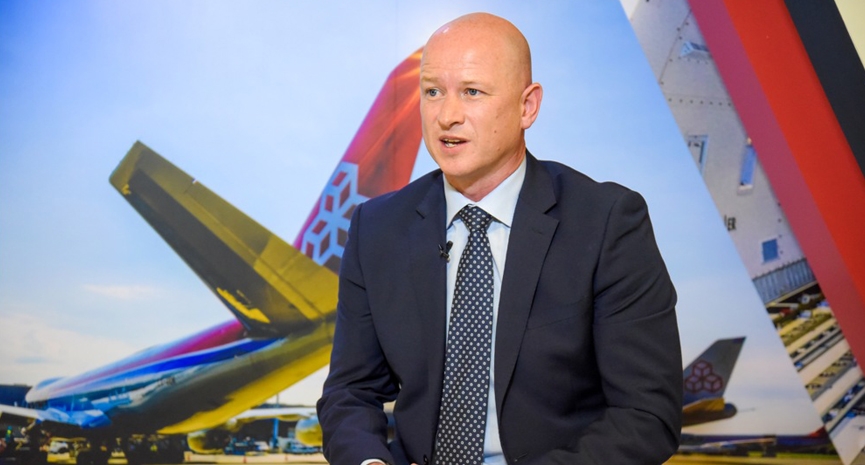FROM MAGAZINE: Interview with Jonathan Clark, Regional Director - Africa, Cargolux
Aviation - In 1970, Cargolux started operations from its home base at Luxembourg Airport with a handful of Canadair CL-44 freighters.

In 1970, Cargolux started operations from its home base at Luxembourg Airport with a handful of Canadair CL-44 freighters. Over the years, it has become one of the biggest all cargo airlines with a fleet of modern Boeing 747-8 and 747-400 freighters. Africa, being a major trade partner for Europe, the Luxembourg-based cargo airline has been expanding its presence in the continent. The carrier is looking to add new destinations in East Africa and Central Africa hoping that demand to and from the continent will pick up after a tough 2016. Jonathan Clark, Regional Director - Africa, Cargolux, speaks to Twinkle Sahita, on how the year 2016 has been for Cargolux, expansion plans and on key initiatives to remain one of the top cargo airlines in the region. Edited Excerpts.
How do you see the air freight market in Africa evolving?
Over the next eighteen months, there is going to be very steady growth. We may see growth between 4 to 5 percent. Last year, it was quite a low especially in the import freight in West Africa and Southern Africa. And I would say for next 18 months, it's going to be steady growth rather than something exceptional.
How has the year 2016 for Cargolux Africa?
2016 was a difficult year. Especially in the first eight months of the year we really struggled as volumes from China, North America, and West Africa and Southern Africa dropped quite a bit but then the last four months made quite a remarkable recovery. I think the whole industry saw a huge boost in the last four months of the year.
What's the target that you have set for the cargo airline in terms of volume and revenue growth?
I think it's very difficult to put your finger on it. The Chinese market picked up, and also North America's volumes picked up as well. The yield in both these markets picked up compared to the same period in the previous year. Therefore, this will definitely up the volume especially in Africa as well.
What are your growth projections for the years ahead?
For this year I'm looking for annual growth of between 6 to 10 percent which I think is fairly achievable as long as the volume continues to remain the way they are. The beginning of the year was quite tough, first three weeks of January was quite slow but we have seen a very good February so far.
What potential markets are you looking at to expand in future?
We are looking to expand in East Africa. Maybe we will add one or two destinations this year. We are looking for Central Africa and may be one or two destinations over the next two or three years in Central Africa. Our goal is to try and open some new markets something that we have not done before. I'm trying to cement cargo access plan in Africa. At the moment, we are into 12 destinations so would like to grow into 13, 14, 15 may be even 16 new destinations in Africa over the next two years.
In the highly competitive market, what efforts are you taking to remain as one of the top cargo airlines in the region?
I think for us there are too many things that I see are critical for performance. Firstly, quality is key and secondly, being reliable is something which is very important for customers especially a lot of customers dealing in perishables so we try to deliver on time. Another key thing remains flexibility; you know customers seek out flights to be flexible.
What are the biggest regulatory challenges in connecting Africa's aviation markets?
The biggest challenges are basically the traffic rights. Getting the traffic rights in various countries I think is quite difficult in some places where the market is closed. For example, Ethiopia which is a market I would love to go into but because of the constraint from the traffic rights point of view, probably we will never get traffic right over there sadly not in the next year or two. So for us, really the traffic right issue and also when you are looking at some ports where there is monopoly on handling or monopolistic approach then it's very difficult for front carriers to operate.


